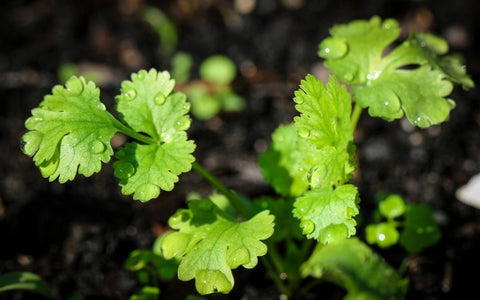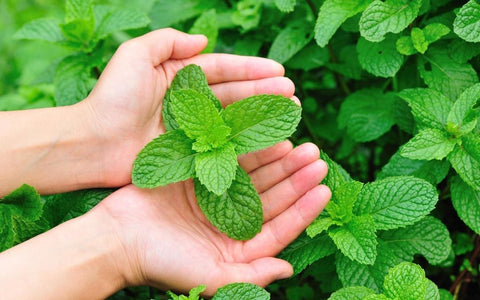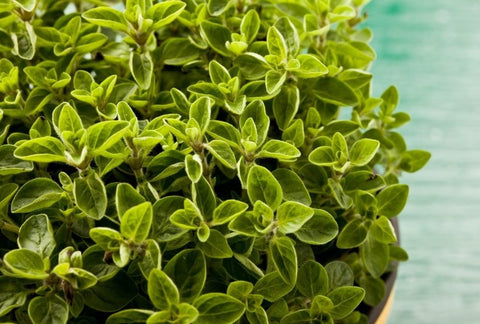As we already know, cilantro, just like most herbs, is quite easy to grow and has a great variety of types and culinary uses. We have talked about growing cilantro indoors, but you might be wondering about growing it outdoors, too. So in this blog, we’ll be talking about everything related to growing cilantro outdoors, from basic facts, supplies, setup, and steps to grow, care for and harvest it, and gardening zones in the US and how they can impact outdoor gardening.
| Plant type | Annual |
| Family | Apiaceae |
| Binomial name | Coriandrum sativum |
TimingCilantro sprouts in 1-2 weeks. They can be harvested from Month 2+ on. Full sunCilantro grows best with enough sun that is equivalent to 4+ hours of direct sun [DLI of 12+ mol/m²/day]. CareGrowing cilantro outdoors is beginner-friendly, but it can involve a few more processes compared to growing them indoors. You’ll sprout, thin, prune, and harvest, and maybe try to get rid of pests and other problems from time to time. |
TABLE OF CONTENTS
Ways to Grow Cilantro | Care and Maintenance | Timeline & Steps
Ways to Grow Cilantro Outdoors
Growing Cilantro Outdoors Using Soil
Cilantro plants, unlike basil, don’t do well in moist soil conditions. The roots are not accustomed to being too wet and will rot in boggy conditions. On the other hand, if the soil dries out completely the roots will die back and the plant won’t recover. This can catch you off guard because the plant’s not very expressive (its leaves don’t wilt) so it will look fine right up until it dies.
You have two options to choose from when growing cilantro outdoors:
- Plant directly onto soil
- Use a container - with drainage!
If you prefer planting directly onto soil, you can use potting mixes you can buy from stores or online, or you can also create your own. In this blog, we explained how to create your own potting mix. Just remember that herbs such as cilantro thrive more in nutrient-dense soils, so if you don’t have that, you can also look into incorporating plant foods or fertilizers.
We prefer using containers as we have more control over the growth of herbs by using this method. Some herbs can grow aggressively and take over the whole space of garden beds or soil sites. Take note that if you opt for containers, they should have good drainage as herbs such as cilantro thrive well in this kind of environment. Check this out if you’re not sure what size of pot or container to use for your herbs.
You can also see the table comparison below about the pros and cons of soil and containers:
| Pros | Cons | |
| Soil |
|
|
| Container |
|
|
Other Ways to Grow Cilantro Outdoors
You can also use ollas (plant watering spikes/globes) for your containers to help with drainage. Raised beds are a good choice for growing herbs such as cilantro outdoors, too.
Best Gardening Zones for Growing Cilantro Outdoors
Cilantro can be grown in most areas, but keep in mind that they prefer cooler temperatures and don’t do well in moist soil conditions. Specifically for zones 8-11, the perfect time to grow cilantro outdoors would be during the fall season.
You can also check out how to grow cilantro indoors if you’d like your cilantro plants to be transplanted or grown indoors instead.
Care and Maintenance of Cilantro Outdoors
Lighting for Growing Cilantro Outdoors
Out of all edible plants, cilantro plants have some of the lowest light needs - but since you’ll be growing them outdoors, you just need to make sure that they would be put in a very bright place that gets at least 4+ hours of direct sunshine.
Right Temperature for Your Outdoor Cilantro Plant
Extend your harvest by keeping the Temperatures Cool
Cilantro is known as a “cool weather crop.” If it senses warming temperatures it will “bolt” - send up flowers and become bitter in the process. Where you plant them can have some effect on the temperature - lower positions on a growing rack and ceramic planters tend to run cooler. It's best to avoid places that get really hot, especially in the summer.
Water and Humidity
Herbs such as cilantro thrive on an adequate amount of moisture but can suffer if they’re waterlogged, so make sure to water them just enough, especially if you’re using soil. To avoid your cilantro being waterlogged, make sure to use a pot with drainage, or you can also use ollas to help with drainage, as mentioned above.
Nutrients and Fertilizers
Cilantro likes to start with nutrients that are equal parts nitrogen, phosphorus, and potassium (with NPK numbers like 10-10-10). For this Balanced Blend we recommend: Dr Earth All Purpose. Once they are growing, it’s better to use plant food that is high in nitrogen (with NPK numbers like 10-5-5). For this Herb Blend, we recommend: Joyful Dirt All Purpose.
When to Move Your Cilantro Plant Indoors
Cilantro mostly thrives in cooler temperatures, as we talked about above, so it is a hardy plant and can usually tolerate temperatures around 50-85 degrees Fahrenheit (10-29 degrees Celsius). It may start to bolt once the temperature exceeds 85 degrees Fahrenheit (29 degrees Celsius) and that’s when (or before that) you’d want to move your cilantro plant indoors. Click here to learn more.
Common Problems with Growing Cilantro Outdoors
Pests
As you’ll be growing your cilantro outdoors, you need to keep in mind that you might encounter pests. The most common pests for cilantro are aphids, cutworms, and armyworms. Check this very educational article out to learn more about managing these pest problems.
Diseases
Growing plants outdoors or indoors can also bring risks to your plants, such as leaf spots and mildew. There are different solutions for each of these diseases, and for you to know more about them, you can read this very helpful article from plantvillage.psu.edu.
Timeline and Steps on How to Grow Cilantro Outdoors
Best Setup for Your Outdoor Cilantro Plants
Below is the best setup (and a very easy one!) for growing your cilantro plants outdoors. You’ll need:
Planter
Ceramic Self Watering Planter or pot that is at least 4" / 1 pint. Raised beds and ollas are also great choices.
Soil
Free-Draining Mix
Plant Food
At the start: Balanced Blend. This should be equal parts nitrogen, phosphorus, and potassium (with NPK numbers like 10-10-10). Ongoing: Herb Blend. This should be high in nitrogen (with NPK numbers like 10-5-5).
Starting your cilantro: Seed vs Cutting vs Nursery Plant
New Cilantro plants can be started from seed, propagated from an established plant, or purchased live at many garden centers. We prefer to sprout from seed or propagate from a stem cutting, as it results in plants that are adapted to your growing conditions and limit the chances that you accidentally bring home pests.
How to Plant Cilantro Seeds

Cilantro grows quickly from the seed. Plant 5 sites in a 4" / 1-pint container. In larger containers, space sites 1" apart. For each site, plant 2 seeds 1/4 inches deep. Keep the soil warm (55-70°F, ideally 65°F). Sprouts typically appear in 8 days but can be as quick as 6 days or as long as 10 days depending on your conditions.
Green Thumb Guide: Soak Your Cilantro Seeds Before Planting
To speed things up, you can soak them in water for 1-2 days before planting.
How to Transplant Cilantro

Live starter plants give you a big jump start on your first harvest. When you’re in a garden center, pick the bushiest plant available (tall and lanky ones will be weak growers) and give it a good inspection for pests. Leaves should be dark green without holes, spots, or curled edges. A best practice is to actually “quarantine” your plant for about a week after bringing it home to make sure it's free and clear of ride-on pests. Ensuring it’s pest and disease-free, it’s time to transplant your seedling into its final home.
- Remove some soil from its final planter - leaving enough space for the bottom of the seedling to be just higher than the soil surface.
- Hold on to the base of the stem with one hand, and turn the pot over while gently pulling the seedling. Giving the pot a few squeezes can help dislodge it.
- Place in its final container and fill around it with soil so that it’s tight, but not compacted.
Week 1-2: Check for Sprouts
You could see seedlings in as little as 6 days (though 8 days is more typical). If it’s been 10 days and you still don’t have any sprouts, it’s likely that your setup is too cold.
Week 3: Thin Your Seedlings

Thin your planter to only have 1 seedling per site - leaving the largest plant. If you are using the recommended planter (at least 4" / 1 pint) this will mean you’ve got 5 plants after thinning. By getting rid of the smaller seedlings, you’re allowing the biggest and strongest one to flourish by reducing its competition for water, food, and space. If your seedlings are under 1 inch, stretching out, or folding over, it’s likely that they don't have quite enough light.
Week 4: How to Prune Cilantro

You’ll notice how all the stems and leaves of Cilantro grow from a single, central point (called radial growth). The plant puts out new leaves in the center and pushes old leaves outward, getting bigger and bushier over time. Pruning and harvesting are one-in-the-same as Cilantro. Once the plant has at least 3 separate stems coming from the base, take one of the outside leaves and cut it close to the base (½” above is fine). It’s good to leave at least 2/3rds of the plant left to regrow. If you only want a tiny amount of herbs, you also can clip the top of an individual stem – just be sure to leave some leaves on that stem, otherwise, it won’t grow back.
Month 2+: How to Harvest Cilantro
As soon as plants are about 4 inches you can start harvesting. Pick the largest leaves and cut them about 1 inch from the base. Pick from the outside when taking an entire leaf.
How to Use Your Freshly-harvested Cilantro in Cooking
As we all know, cilantro is a staple herb used by the most prominent chefs around the world to ordinary food lovers at home. Cilantro can be used in many ways:
- Spicing up your dips and sauces
- Added as toppings for your pasta
- Added as a garnish to any soup or rice dish
Check out some more of our favorite cilantro recipes here.
How to Preserve Cilantro
There are several ways to preserve or keep your herbs fresh, and here are just some of the easiest and the ones we recommend the most:
- Lazy person technique. It involves keeping the fresh herbs in their original packaging and simply storing them in the fridge.
- Storing the herbs in a glass of water inside the fridge. You can do this by cutting the end of the stem of your herb, filling a glass jar or cup with water, and placing your herb inside. Almost like a vase or bouquet of herbs!
- Keep in a glass of water under natural lighting.
- Wrap loosely in a damp paper towel.
- Freeze the herbs! Yes, you can freeze fresh herbs such as cilantro to use at a later time! All you need are some ice cube trays and a freezer, and you’re all set.
Learn more about how to preserve and keep your herbs and cilantro fresh here.
Month 5-6: End of Life
As cilantro matures, the leaves will change to a feathery shape, reminiscent of dill. The mature leaves are much more bitter than the younger leaves, but you can use the seeds as coriander in your cooking. If you want to know why cilantro bolts and what you can do about it, check this article out.
If you’d like to learn about the dozens of other herbs, fruits, and vegetables that you can grow outdoors and indoors, then grab a copy of our free eBook below.
We hope that this blog has given you everything you need to know about growing cilantro outdoors. In case you have any questions, just leave a comment below.









There are no comments for this article. Be the first one to leave a message!